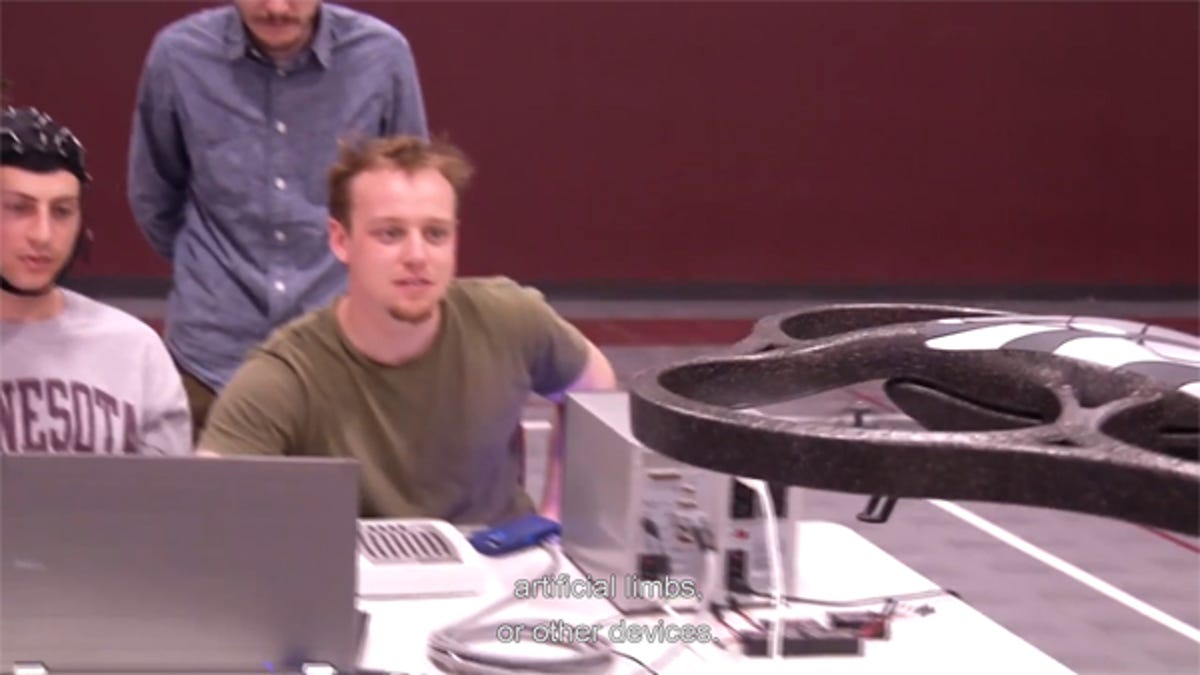Mind-controlled quadcopter takes to the air
Researchers at the University of Minnesota have designed an interface that allows humans to control a robot using only their thoughts.

(Screenshot by Michelle Starr/CNET Australia)
Researchers at the University of Minnesota have designed an interface that allows humans to control a robot using only their thoughts.
How close are we getting to actual brain control? It's starting to seem not far off at all. On the more silly end of the spectrum, we've seen robotic ears and tails that respond to brainwaves; but we've also seen more recently a Chilean company that has created a brain interface for designing printable objects, a mind-controlled exoskeleton for helping people walk, even mind-to-mind communication.
A team of researchers at the University of Minnesota has just added another exciting new technology to the list: a quadcopter that can perform feats of aerial agility, controlled entirely by the pilot's thoughts.
Using electroencephalography (EEG), a non-invasive cap fitted with 64 electrodes reads the electrical impulses of the brain to control the copter. Thinking of making a fist with the left hand, for example, fires off certain neurons in the brain's motor cortex; the cap interprets this pattern and sends a command to the copter to turn left. Other commands include thinking of making a fist with the right hand to turn right, and making two fists to tell the copter to rise.
In this way, five subjects — two male and three female — were able to successfully pilot the quadcopter quickly and accurately for a sustained period of time through an obstacle course in the university's gymnasium.
Professor Bin He, lead author of the study "Quadcopter control in three-dimensional space using a non-invasive motor imagery-based brain–computer interface", hopes that the research will be developed to create solutions for the disabled. "Our next goal is to control robotic arms using non-invasive brain wave signals, with the eventual goal of developing brain–computer interfaces that aid patients with disabilities or neurodegenerative disorders," he said.
This will not be the first mind-controlled robotic arm; however, the robotic arm announced in December last year requires a brain implant. He's solution is much less invasive, requiring no surgery to implant the interface.
Check out how the quadcopter flies in the video below.

